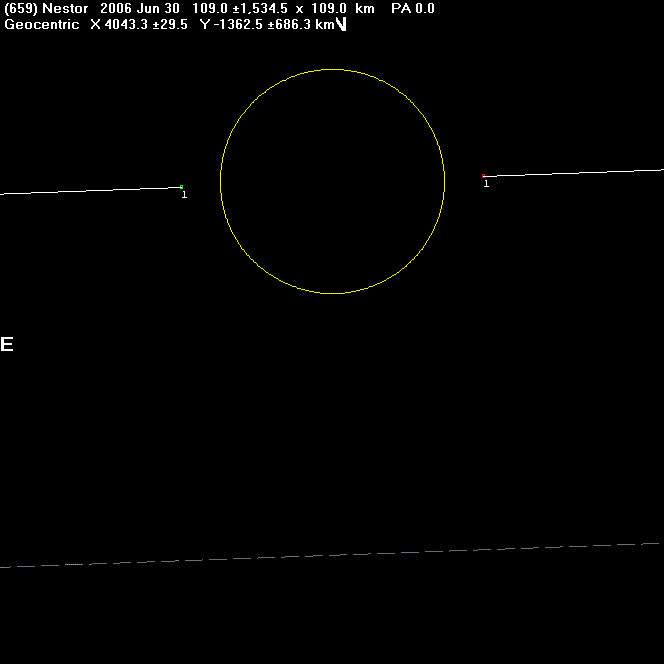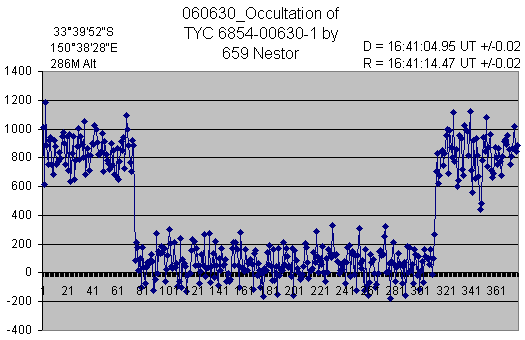A 9.52 second occultation was recorded by David Gault at Hawkesbury Heights, NSW, Australia, using video and GPS technique.
View the updated prediction.
Observers: 1 David Gault, Hawkesbury Heights, NSW, Australia

Discussion:
The circle above is plotted at the published diameter 109 km. The measured chord is much greater at about 147 km. With only one chord it is not possible to determine if this is the longest possible chord.
The figures below show the plot image intensity during the occultation.

Observational Data:
Observer's Name : David Gault Aperture (cm) : 25 Focal length (cm) : 122 Type (e.g. SCT; Newtonian) : EQ Newtonian Magnification : N/A Observing site name : Dave's Skyshed Longitude (DD MM SS ; East +ve) : 150 38 27.8 Latitude (DD MM SS ; South -ve) : -33 39 52.0 Height above Sealevel (metres) : 286 Geodetic Datum (e.g.WGS84,NZ1949): WGS84 Height Datum (if known) : MSL Sky Transparency (Delete two) : Good Star Image Stability (Delete two): Good Other Conditions: Time Source (e.g. WWVH, GPS) : GPS-KIWI Recording method (e.g. tape) : Video Could you see the Asteroid? : NO Started Observing : 16:35 Star and Object Merged : Not sighted Disappearance At : 16:41:04.95 +/-0.02 Instantaneous see chart Reappearance At : 16:41:14.47 +/-0.02 Instantaneous see chart Star and Object Separated : Not sighted Stopped Observing : 16:45 ADDITIONAL COMMENTS: A nice surprise as the predicted path was to my south. The timed duration of 9.52 seconds is significantly longer that the predicted 7.2 seconds, which makes Nestor larger, at least in one axis than previously known. Looking at the event chart you may notice a dip in brightness 36 frames after the reappearance event. I took a closer look at this, also measuring the brightness of two close stars for comparison. The chart for this is also attached and measurements are based from the R event. I think this is noise.